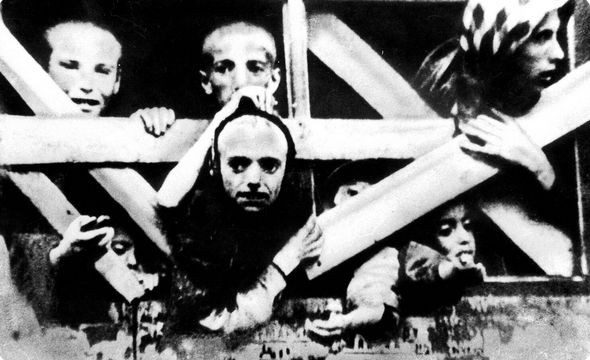The criminals of Treblinka did almost all they could to cover up the traces of their heinous actions and condemn their victims to be forgotten. The Institute of National Remembrance has made a lot of effort, and will do even more, to combat attempts to relativise the crimes as well as social amnesia.
That summer the Wehrmacht was in headlong retreat along the eastern front. In July 1944, the Germans surrendered the cities of Minsk, Vilnius and Lvov one by one to the Soviets, withdrawing all the way back to the Vistula. One totalitarian system was being replaced by another, but, before that happened, the former tried to cover up the traces of its terrible crimes.
Such was the case of the Treblinka I forced-labour camp located about half way between Warsaw and Białystok. Most of its remaining prisoners – several hundred Jews and some twenty Poles, including women and children – were shot by the Germans on 23 July 1944. Abandoning the camp, its personnel destroyed the documentation. The collected valuables were carried off and the buildings were set on fire. Treblinka I – the place where 20,000 people were imprisoned and about 10,000 died – disappeared from the face of the earth just like it happened nearly one year before to the nearby death camp, Treblinka II, the largest German “death factory” after Auschwitz.
The perpetrators did virtually everything in their power to obliterate the evidence of their shameful deeds. Admittedly, they were largely successful and most of them lived to old age in peace. What is worse, their victims still remain very much anonymous. However, even today – several dozen years after the war – human determination and modern technology can go a long way to thwart the henchmen’s intentions. In 2019, the Prosecutor’s Office of the Institute of National Remembrance in Szczecin opened an investigation into the crimes committed in Treblinka I. The objective was clear right from the outset: find the victims to save them from oblivion and identify the criminals so that they can be judged by history.
Some priceless information was provided by still living witnesses. As usual in such cases, it was also necessary to conduct a painstaking search of archive materials such as satellite photos and old aerial pictures. Equipped with these resources, prosecutors Krzysztof Bukowski and Marek Rabiega with their team of experts could start their work in the execution area adjacent to the camp in the autumn of 2019. State-of-the-art equipment was used: metal detectors, a ground-penetrating radar, drones and laser technology. The work continued for almost three weeks and more than a dozen hours each day. The proceedings were attended by an international team of experts in different fields.
The very first day of work revealed a previously unknown mass grave under a forest car park. Eventually, the team found and unearthed the remains of at least 53 victims as well as seven camp guards or wachmanns who were usually Ukrainian and helped the German personnel. Prosecutor Rabiega’s group also collected many items that were the property of the victims: from buttons, pieces of clothing and personal belongings to pre-war Polish coins. Also excavated from the blood-stained earth were pieces of ammunition and firearms.
Preliminary findings are chilling enough. They fully confirm what we knew before only from witness accounts. The prisoners of Treblinka I died not only of exhaustion and bullets. They were also killed with clubs, sticks and rifle butts. Some of them were under-aged. In addition to being a place of executing camp prisoners, the site was used to bury people who were brought there to be killed from nearby towns and even from as far as Warsaw (including the infamous Gestapo torture chambers of Pawiak and Szucha Alley) and the surrounding area. Suffice it to say that one of the items found during the excavation overseen by the Institute of National Remembrance is the badge of a Jewish policeman from the Falenica ghetto.
The Prosecutor’s Office of the Institute of National Remembrance still has a lot of work to do. Among other things it needs identify the victims and search for their relatives. I believe that at least some of the murdered will soon not only get a decent burial but also have their names brought back from oblivion. Nonetheless, one important stage of the investigation that can be symbolically concluded even today. On 27 January – the International Holocaust Remembrance Day – the Institute of National Remembrance will donate the items the prosecutor’s team found in the bloodied ground to the Museum of Treblinka – Nazi German Extermination and Forced Labour Camp (1941–1944). They will make a great contribution to the collection held at this poignant place of commemoration. Let the Thursday ceremony send an emphatic message that the last will of the criminals has been scuppered. The Polish Republic remembers about its citizens and, many years after the events, spares no efforts to preserve their memory.
Karol Nawrocki, Ph.D.
